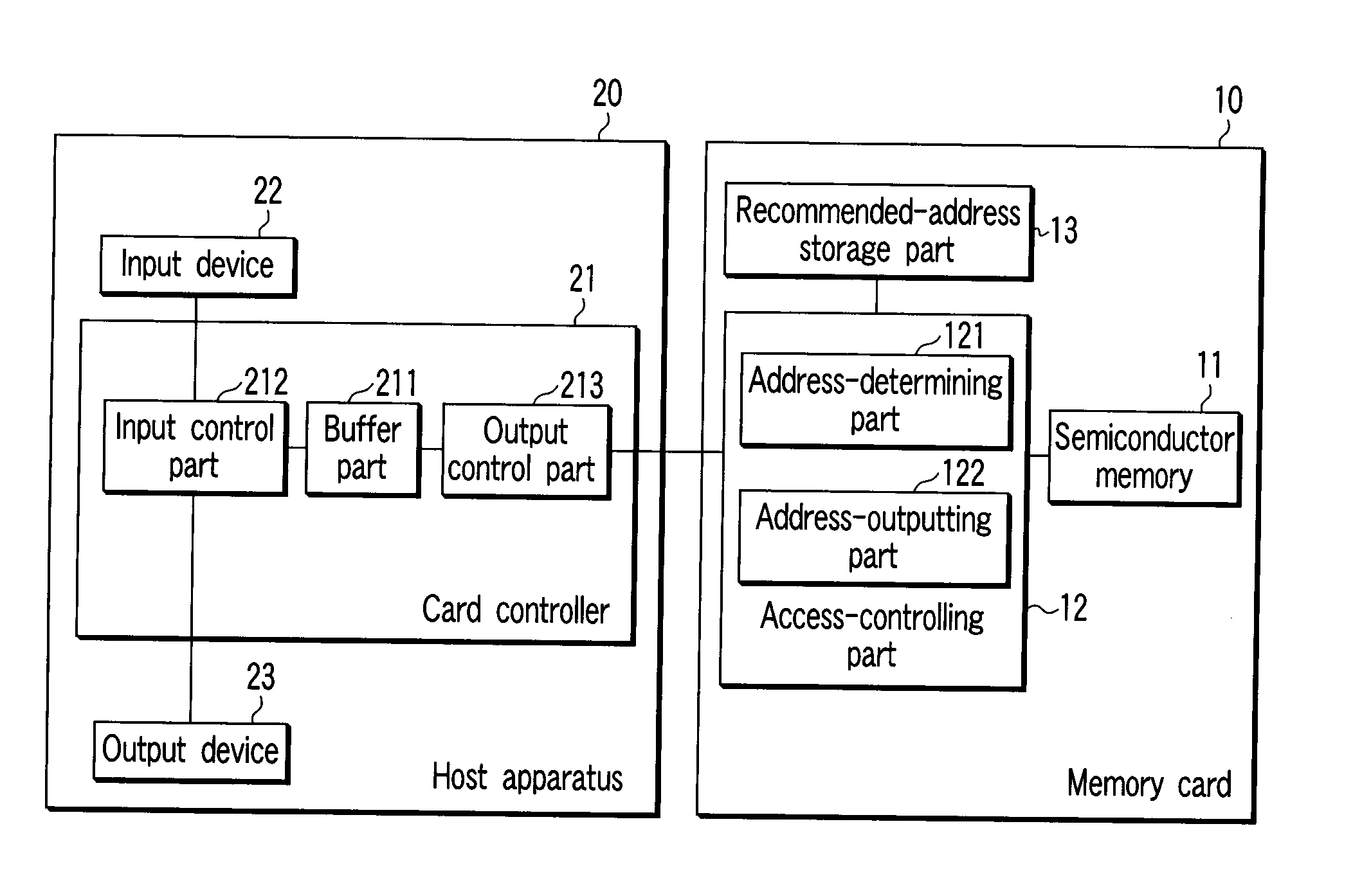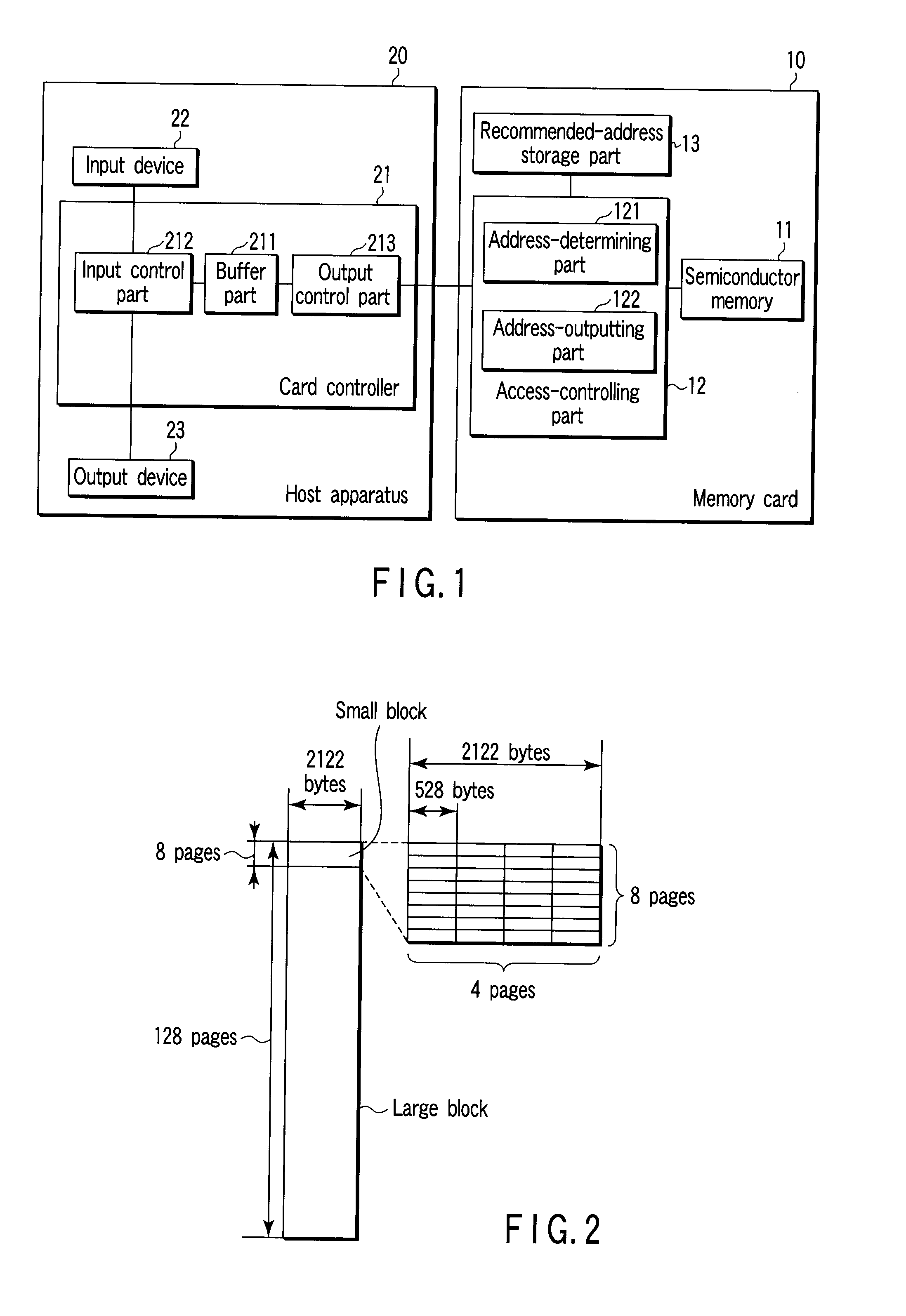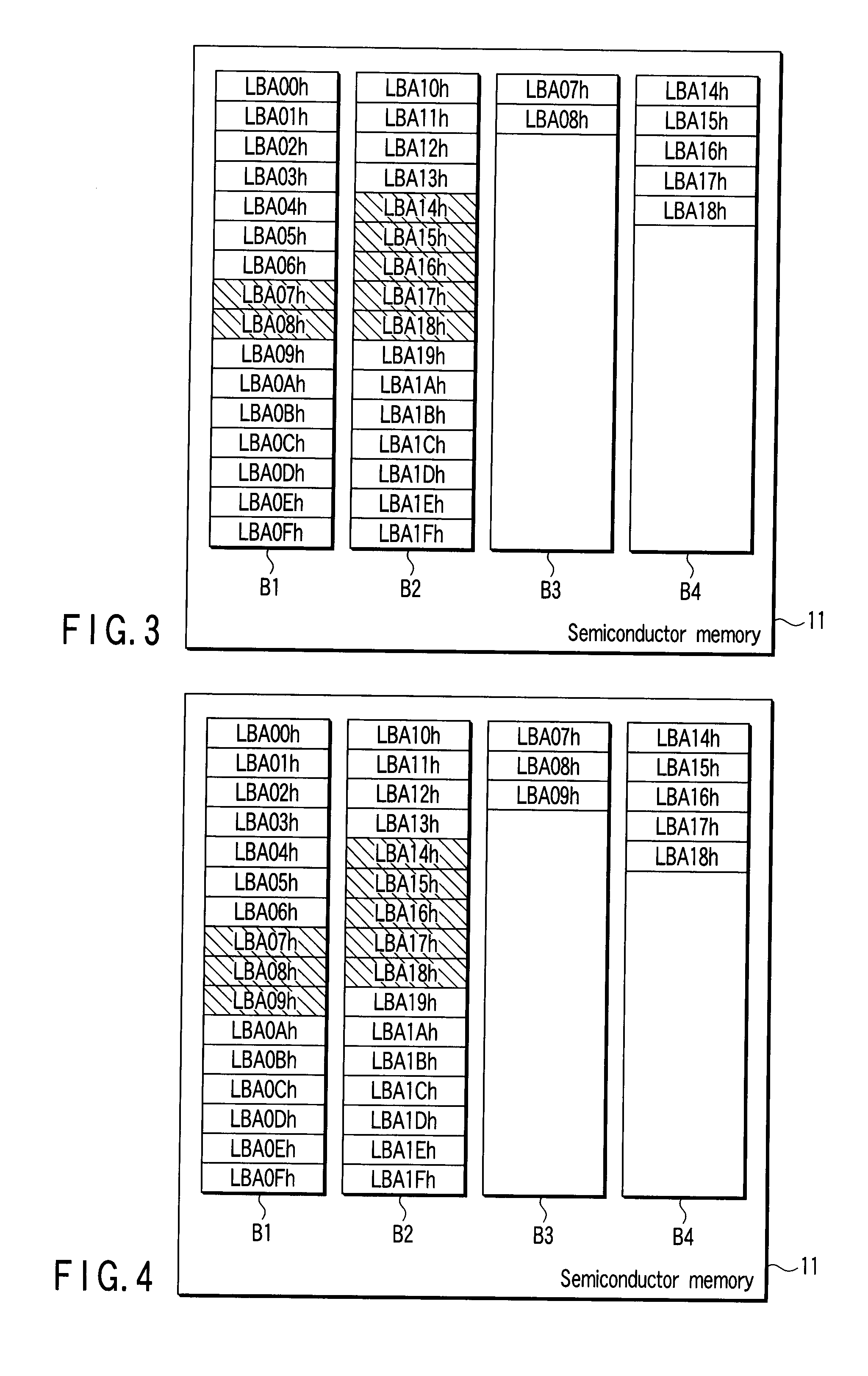Memory system and method of controlling the memory system
- Summary
- Abstract
- Description
- Claims
- Application Information
AI Technical Summary
Problems solved by technology
Method used
Image
Examples
first embodiment
[0026] As shown in FIG. 1, the memory card according to the first embodiment of this invention is a memory card 10 that can transmit data to and receive from a host apparatus 20. The memory card 10 comprises a semiconductor memory 11 and an access control part 12. The semiconductor memory 11 can be accessed from the host apparatus 20. The access control part 12 determines a recommended address to be accessed, from the operation information about the memory card 10. The recommended address thus determined is output to the host apparatus 20. Data to which the recommended address is allocated is read from, or written into, the semiconductor memory 11. Data to which the recommended address is allocated can be written faster than data with any other addresses at the time certain data writing is completed. The “operation information” represents a factor that influences the process time in response to an access to the semiconductor memory 11, such as the data-storage state or the functions...
second embodiment
[0063] As FIG. 12 shows, a memory card 100 according to the second embodiment of the present invention comprises a semiconductor memory 110 and a memory controller 120. The memory card 100 can be coupled to a host apparatus 20. The host apparatus 20, which is shown in FIG. 12, is identical in configuration to the host apparatus 20 shown in FIG. 1.
[0064] Like the semiconductor memory 11 according to the first embodiment, the semiconductor memory 110 has its access speed changed in accordance with the address that has been accessed. The semiconductor memory 110 comprises a memory core 111, an access-controlling circuit 112, and a recommended-address storing circuit 113. The memory core 111 is constituted by, for example, districts D1 to D3 as shown in FIG. 9 or FIGS. 10A to 10D. The access-controlling circuit 112 selects recommended addresses in accordance with the operation information about the memory core 111. The access-controlling circuit 112 comprises an address-selecting circu...
PUM
 Login to View More
Login to View More Abstract
Description
Claims
Application Information
 Login to View More
Login to View More - R&D
- Intellectual Property
- Life Sciences
- Materials
- Tech Scout
- Unparalleled Data Quality
- Higher Quality Content
- 60% Fewer Hallucinations
Browse by: Latest US Patents, China's latest patents, Technical Efficacy Thesaurus, Application Domain, Technology Topic, Popular Technical Reports.
© 2025 PatSnap. All rights reserved.Legal|Privacy policy|Modern Slavery Act Transparency Statement|Sitemap|About US| Contact US: help@patsnap.com



